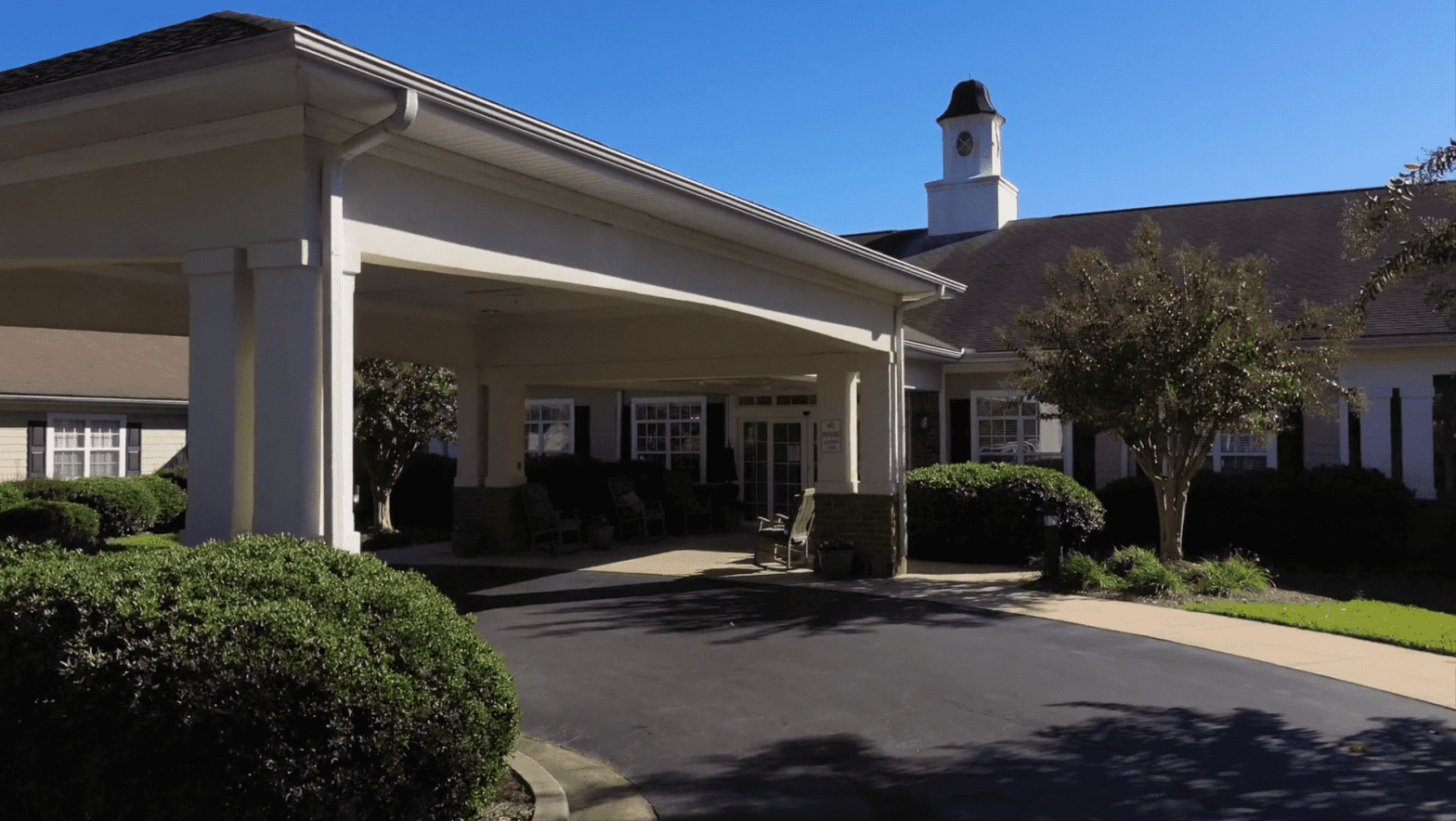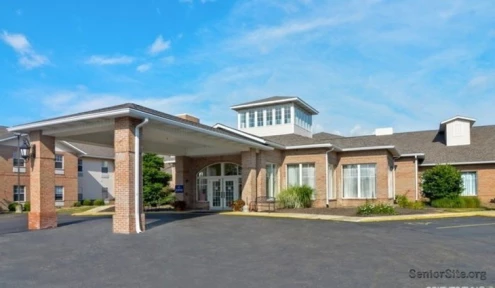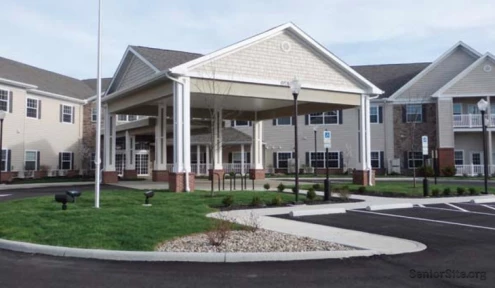Assisted living in Minnesota costs $5,350 monthly on average, matching nationwide figures but creating substantial financial strain for families seeking financial assistance. Costs climb even higher in specific locations like St. Cloud, where monthly rates reach $8,635, with memory care services adding another 20-30% to these already significant expenses.
Financial help for assisted living is available through multiple programs, though many families don’t know their options exist. Is there financial assistance for assisted living? Yes. Currently, 46 states plus Washington, D.C. provide some form of Medicaid support for residential care, while qualifying veterans can access up to $2,727 monthly through the Aid and Attendance Benefit. Private funding sources and state-specific programs offer additional financial aid for assisted living when conventional options aren’t sufficient.
This guide examines all available assisted living financial assistance programs, from Medicaid waivers to Veterans benefits, explaining eligibility requirements and application processes. It also covers private funding options and delivers practical solutions for families struggling financially while trying to secure quality care for their loved ones.
Understanding the Cost of Assisted Living
Before exploring financial assistance options, families must understand what they’re paying for. Assisted living costs represent a significant financial commitment, with the national median reaching $5,350 per month or $64,200 annually as of 2023. These expenses require careful evaluation when making decisions about care options and financial planning.
What does assisted living include?
Base fees for assisted living typically cover fundamental services that vary by provider. Most communities include:
- Monthly rent and utilities
- Three daily meals and snacks
- Weekly housekeeping and laundry
- Emergency response systems
- Scheduled transportation
- Social and recreational activities
- Basic maintenance
Beyond these basics, assisted living communities assess each resident’s needs upon move-in and at regular intervals thereafter. This evaluation, typically conducted by a licensed nurse, determines additional care-related fees based on the level of assistance required.
Most communities structure their pricing in one of three ways:
- À la carte model – Residents pay a base rate plus individual fees for specific services, potentially saving money for those with minimal needs
- All-inclusive model – A single monthly fee covers housing, meals, and personal assistance, offering predictability for budgeting
- Tiered structure – Three to five care levels with corresponding price points based on the amount of staff time and services needed
Care needs assessments and pricing details should be clearly outlined in the residency agreement, which is a legal document often containing language prescribed by state regulations.
Average monthly costs by state
The cost of assisted living varies dramatically across the country. Washington D.C. has the highest annual cost at $135,450 ($11,288 monthly), more than $50,000 above the second-highest state, New Hampshire, at $84,255 annually.
At the other end of the spectrum, Missouri offers the most affordable assisted living options at $34,556 per year ($2,881 monthly), over $100,000 less than D.C.’s rate.
Regional patterns emerge when examining costs. States in the Northeast and West Coast generally maintain higher price points, whereas the Midwest and South typically offer more affordable options. Here’s a snapshot of monthly costs in various states:
| Region | State Examples | Monthly Cost |
|---|---|---|
| Northeast | New Hampshire | $6,879 |
| Northeast | Massachusetts | $6,669 |
| West | Hawaii | $5,495 |
| South | Delaware | $6,525 |
| South | Louisiana | $3,811 |
| Midwest | Minnesota | $5,040 |
| Midwest | Iowa | $4,968 |
For families seeking assisted living financial assistance, these substantial price differences highlight why geographic location must be considered when evaluating care options and potential financial aid programs.
Why costs vary so much
Several key factors explain the significant price variations in assisted living:
Location plays perhaps the most critical role. Urban areas typically cost 20-30% more than rural settings due to higher property values, operating costs, and staffing expenses. Market competition, local regulations, and regional labor costs further influence pricing.
Level of care needed substantially impacts costs. Additional services like medication management (about $500 monthly), specialized monitoring, and assistance with activities of daily living increase the monthly bill. According to nationwide median prices, low-level care adds approximately $550 monthly, medium-level care adds $1,300, and high-level care adds $2,343 to base rates.
Housing options and amenities significantly affect pricing. Larger apartments or private rooms cost more than shared accommodations. Furthermore, luxury communities featuring resort-style amenities like gourmet dining, swimming pools, and extensive recreational options command premium prices.
Community type influences costs as well. Luxury boutique-style facilities can cost several thousand dollars more per month than standard communities. Additionally, specific care types like memory care typically add 20-30% to standard assisted living costs.
Consequently, for many seniors—including over 16 million aged 65+ living on less than $26,000 annually—the need for financial aid for assisted living becomes evident. These substantial costs explain why many families must explore assisted living financial assistance programs to secure appropriate care for their loved ones.
Is There Financial Assistance for Assisted Living?
Countless families wonder, “Is there financial assistance for assisted living?” The answer is yes – numerous programs exist, though navigating these options requires understanding what’s available and who qualifies.
Overview of available financial aid programs
Despite common belief, several paths to financial assistance for assisted living exist:
- Medicaid Waivers/HCBS Programs – As of 2024, 46 states and Washington, D.C. offer some level of assistance for individuals in assisted living through their Medicaid programs. These typically come through Medicaid Waivers (also called Home and Community Based Services Waivers or 1915(c) Waivers). States increasingly support assisted living because it costs less than nursing homes.
- Veterans Benefits – The VA Aid and Attendance Benefit provides monthly financial support of up to $2,300 for single veterans and $2,727 for married veterans as of 2024. This benefit specifically helps veterans who need assistance with daily living activities.
- Supplemental Security Income (SSI) – This federal program provides monthly stipends to low-income individuals who are 65+ or disabled. While not directly paying for assisted living, these funds can help cover costs.
- State Non-Medicaid Programs – Many states offer their own assistance programs. For example, Georgia provides help through the Elderly and Disabled Waiver Program, previously known as the Community Care Services Program.
- Community and Charitable Resources – Various organizations provide grants and financial support for seniors needing care assistance.
Who qualifies for financial help?
Eligibility varies by program but typically involves meeting certain criteria:
For Medicaid Waivers:
- Age requirement (typically 65+)
- Income and asset limits (these vary by state)
- Medical or nursing need assessment
- Citizenship status verification
In Georgia, for instance, the Elderly and Disabled Waiver Program requires applicants to be 65+ years old, eligible for Medicaid, and have physical limitations that would otherwise require nursing home care.
For Veterans Benefits:
- Active duty service (minimum 90 days with at least one day during wartime)
- Honorable discharge
- Need for assistance with daily activities
- Income and asset limits
For SSI and State Programs:
- Low income (typically below 150% of federal poverty level)
- Limited assets
- Age (65+) or disability
- Specific care needs
Most programs require documentation to verify income, assets, and medical necessity. Many use a screening process to determine if applicants truly need the level of care provided by assisted living facilities.
Common misconceptions about coverage
Several myths persist about financial aid for assisted living that prevent families from seeking help:
Myth #1: Medicare covers assisted living costs Reality: Medicare does not pay for assisted living room and board or personal care assistance. It may cover specific medical procedures in an assisted living setting, but not the monthly fees or personal care.
Myth #2: Assisted living is only for the wealthy Reality: While assisted living represents a significant investment, various financial assistance programs can make it accessible to those with lower incomes. Many families use a combination of resources to cover costs.
Myth #3: Medicaid covers all assisted living expenses Reality: Medicaid’s coverage for assisted living varies significantly by state. In most cases, it covers personal care services but not room and board. States have different regulations, and some limit coverage to specific types of facilities.
Myth #4: Veterans benefits are only for combat injuries Reality: Nearly all veterans who served on active duty for at least 90 days during wartime qualify for healthcare through Veterans Affairs Aid and Attendance Benefit, regardless of whether they were injured in combat.
Myth #5: If you run out of money, you’ll be forced to leave Reality: Many facilities offer hardship waivers or accept Medicaid when private funds are exhausted. Some states also limit the maximum that can be charged or provide non-Medicaid assistance to Medicaid-eligible persons.
Understanding these financial assistance options often requires research and sometimes professional guidance. Nevertheless, with proper planning, it’s possible to access available resources without depleting limited assets.
How to Apply for Medicaid and State Waivers
Medicaid and state waiver support can significantly improve assisted living affordability, though many families find the application process daunting. Understanding eligibility requirements and collecting proper documentation are essential steps toward securing this critical financial assistance for assisted living.
Medicaid eligibility basics
Medicaid eligibility hinges on financial and functional requirements that differ by state. Applicants must first meet income and asset limits. In 2024, a single applicant typically needs assets below $2,000 for HCBS waivers, while some states like New York permit up to $30,182 in assets for an individual.
Most states employ a 60-month “look-back period” to verify applicants haven’t transferred assets to qualify. Medicaid reviews all financial transactions made during the five years before application, potentially imposing penalties for improper asset transfers.
Functionally, applicants must demonstrate need for a “nursing facility level of care”, assessed through:
- Ability to perform daily living activities (eating, bathing, dressing)
- Cognitive status
- Medical requirements
You must be a U.S. citizen or legal resident and typically must apply in your state of residence.
Minnesota’s Elderly and CADI Waivers
Minnesota provides two main waivers for assisted living financial assistance: the Elderly Waiver and the Community Access for Disability Inclusion (CADI) Waiver.
The CADI Waiver serves individuals under 65 who need nursing-facility level care but prefer community settings. Qualifying applicants must:
- Be eligible for Medical Assistance (MA)
- Be certified disabled by Social Security or State Medical Review Team
- Be younger than 65 when first applying for the waiver
- Demonstrate need through MnCHOICES assessment
CADI covers various services including 24-hour emergency assistance, customized living, environmental accessibility adaptations, and home-delivered meals.
The Elderly Waiver offers similar services but targets those 65 and older. Both programs help individuals maintain independence while receiving necessary care.
How to apply and what documents you need
The application process varies slightly by state but generally follows similar steps. In most areas, you’ll need to:
- Contact your local Department of Human Services or Department of Social Services to begin the process
- Complete a Medicaid application form (available online, by phone, or in person)
- Undergo a needs assessment to verify you require nursing facility level care
- Submit all required documentation
- Wait for eligibility determination (typically 45-90 days)
Essential documents typically include:
- Government-issued photo ID and Social Security card
- Birth certificate or proof of citizenship/immigration status
- Income verification (Social Security statements, pension information, tax returns)
- Asset documentation (bank statements, investment accounts, property deeds)
- Medical records supporting care needs
For Minnesota residents, the MnCHOICES assessment evaluates care needs. County agencies, senior centers, and Area Agencies on Aging often provide free application assistance.
Prepare for a potentially lengthy process—applications can take up to three months or longer for approval. Since many waiver programs have limited slots, approved applicants might encounter waitlists before receiving benefits.
Exploring Other Assisted Living Financial Assistance Programs
Beyond Medicaid, families seeking financial assistance for assisted living have several additional options to explore. These programs can either supplement Medicaid benefits or serve as alternatives for those who don’t qualify.
Veterans Aid & Attendance benefits
Veterans and surviving spouses can access substantial financial help for assisted living through the VA Aid and Attendance benefit. As of 2024, this program provides up to $2,300 monthly for single veterans and $2,727 monthly for married veterans. This benefit specifically targets those who need assistance with daily activities.
To qualify, applicants must meet several criteria:
- Served at least 90 days of active duty with one day during wartime
- Received an honorable discharge
- Need help with activities of daily living like bathing or dressing
- Meet income and asset requirements
Application requires completing VA Form 21-2680 (Examination for Housebound Status or Permanent Need for Regular Aid and Attendance). Veterans living in nursing homes must also submit VA Form 21-0779.
Typically, the VA processes claims in the order received, often resulting in wait times. However, priority processing may be available for those experiencing severe financial hardship, terminal illness, or homelessness.
State non-Medicaid programs
Many states offer non-Medicaid assistance programs that help cover assisted living costs. These programs vary widely in structure, eligibility requirements, and benefits.
Texas, for instance, provides the Community Care for Aged/Disabled (CCAD) program, which delivers non-medical personal care services to elderly individuals who prefer residing at home instead of nursing facilities. This non-Medicaid program allows certain family members (excluding spouses and legal guardians) to serve as paid caregivers.
Similarly, California offers the Assisted Living Waiver (ALW) for individuals requiring nursing facility level care who wish to live in residential settings. The program aims to facilitate safe transitions from nursing facilities to community-like settings and helps those at risk of institutionalization remain in residential care facilities.
Minnesota operates the Elderly Waiver and Community Access for Disability Inclusion (CADI) Waiver, both providing extensive services including 24-hour emergency assistance, customized living arrangements, and home-delivered meals.
Social Security supplements

Social Security on its own rarely covers full assisted living costs, yet certain supplements make significant contributions toward financial aid for assisted living.
Supplemental Security Income (SSI) provides monthly stipends to low-income individuals aged 65+ or those with disabilities. While SSI benefits are paid directly to individuals rather than facilities, recipients can use these funds toward assisted living expenses.
Even more helpful, most states offer Optional State Supplements (OSS) on top of federal SSI benefits. These supplements specifically target assisted living residents, with the national average supplement being $145 monthly. In some states, OSS payments go directly to assisted living facilities rather than to individuals.
To qualify for OSS, applicants typically need income at or below the federal SSI benefit rate level. For 2024, this means earning less than $1,971 monthly from employment or receiving less than $963 monthly from non-work sources such as pensions.
Ultimately, families often find that combining multiple resources—Social Security, veterans benefits, state programs, and private funds—creates the most comprehensive assisted living financial assistance package. Working with a benefits specialist or elder law attorney can help identify all available options based on your specific circumstances.
Many seniors find themselves asset-rich but cash-poor when seeking financial assistance for assisted living. Private resources offer valuable alternatives for those who don’t qualify for public programs or need supplemental funds.
Long-term care insurance specifically covers costs when you require assistance with daily activities. Most policies cover assisted living services once you meet certain criteria, typically requiring help with two or more activities of daily living as determined by a doctor’s assessment.
Policies usually include a waiting period (commonly 30-90 days) before benefits begin, during which you’ll need to pay out-of-pocket. After this elimination period, coverage kicks in based on your policy’s terms—either reimbursing your actual expenses up to a daily limit or providing a flat daily amount.
The average cost for $165,000 of coverage in 2023 was approximately $900 annually for a 55-year-old man and $1,500 for a woman of the same age. These policies can be purchased as standalone coverage or as hybrid policies combined with life insurance or annuities.
Life insurance stands as one of the most under-utilized payment options for assisted living. Five ways to leverage a life insurance policy exist:
Life settlements allow selling your policy for an immediate lump sum. Viatical settlements work similarly but are designed for terminally ill individuals and typically fetch higher amounts.
Accelerated death benefits let terminally ill policyholders receive a portion of death benefits in advance. Some choose death benefit loans against the cash value, though these must be repaid or your death benefit will be reduced.
Life insurance conversions transform policies into Long-Term Care Benefit Plans. This option often provides higher returns than cash surrender value, with monthly payments going directly to care providers.
About 40% of all home equity in the U.S.—approximately $14 trillion—is held by homeowners aged 62+, representing a significant potential resource. The median home equity for homeowners 65+ was $250,000 in 2022.
Home equity lines of credit (HELOCs) provide flexible access to funds as needed, making them suitable for ongoing care costs. Unlike reverse mortgages, they don’t require the home to be owner-occupied, offering advantages for couples when one spouse needs care.
Reverse mortgages allow borrowing against home equity without monthly payments, with the loan repaid when the borrower sells, moves out, or passes away. They become due if you permanently move to assisted living. These typically work best when one spouse continues living at home while the other requires care.
Each option carries distinct risks and benefits—consulting with a financial advisor before tapping home equity for financial help for assisted living ensures you’re making the most appropriate choice for your situation.
What to Do If You Run Out of Money
Running out of money to pay for assisted living creates significant anxiety for seniors and their families, but several options exist to address this financial challenge.
Hardship waivers and legal protections
Seniors facing financial exhaustion may qualify for hardship waivers. These waivers become available when imposing a period of Medicaid ineligibility would endanger someone’s health or deprive them of necessities. The application process typically requires:
- Written request submitted to your local human services office
- Documentation of attempts to recover transferred assets
- Proof that health or access to food/shelter would be endangered
- Cooperation with any legal proceedings to recover assets
Federal law protects family members from being held personally responsible for a loved one’s nursing home bills. The Nursing Home Reform Act prohibits facilities from requiring third-party payment guarantees as a condition for admission or continued stay. When reviewing admission agreements, watch for problematic contract terms like “responsible party” or “joint and several liability.”
Negotiating with facilities
Approach management with transparency about your financial situation. Many communities will work with families facing financial constraints. Consider these negotiation strategies:
- Request service package customization to eliminate unnecessary services
- Inquire about move-in incentives or promotional offers not openly advertised
- Ask about waiving entrance fees, especially if the facility has high vacancy rates
- Propose a longer lease term in exchange for reduced monthly rates
- Consider shared living arrangements, which typically cost less than private accommodations
Timing negotiations strategically helps—facilities may be more willing to negotiate at month- or quarter-end when adding residents improves their financial outlook.
Finding lower-cost alternatives
When assisted living financial assistance isn’t enough, several lower-cost options merit consideration:
Residential care homes offer similar support as assisted living but in smaller, more intimate settings and often at lower costs. Adult foster care homes typically house six or fewer residents with a live-in caregiver, providing a homelike environment that’s frequently more affordable than traditional assisted living.
Home care allows flexibility—paying only for needed hours rather than full-time care—though this becomes less economical with round-the-clock needs. At approximately $30 per hour, 24/7 home care would cost about $21,900 monthly.
Family living arrangements, possibly combined with adult day programs or respite care, can provide both care and companionship while minimizing expenses. Local Area Agencies on Aging can connect seniors with community-based programs designed specifically for those with limited financial resources.
Conclusion
Finding financial assistance for assisted living involves navigating multiple pathways with varying eligibility requirements. Medicaid waivers provide substantial support in 46 states plus Washington, D.C., though income and asset limits apply. Veterans benefits offer up to $2,727 monthly for married veterans who need daily living assistance. State-specific programs like Minnesota’s Elderly Waiver and Community Access for Disability Inclusion Waiver deliver specialized support based on individual needs.
Private funding options remain viable alternatives when public programs fall short. Long-term care insurance policies typically require meeting specific criteria, such as needing help with two or more daily living activities. Life insurance conversions represent an under-utilized resource, with options including life settlements, accelerated death benefits, and conversion to Long-Term Care Benefit Plans. Home equity solutions can access the significant resources held by seniors—approximately $14 trillion nationwide—through reverse mortgages or home equity lines of credit.
Combining multiple funding sources typically creates the most effective financial strategy. Consulting financial advisors or elder law attorneys helps identify the optimal mix of resources for specific situations. Starting research early allows families to gather necessary documentation without rushing through application processes.
When funds become limited, additional options exist. Hardship waivers may apply when Medicaid ineligibility would endanger someone’s health. Facility negotiations can reduce costs through service package customization or shared living arrangements. Alternative care settings like residential care homes or adult foster care offer similar support at lower costs than traditional assisted living.
The substantial cost differences between states—from $2,881 monthly in Missouri to $11,288 in Washington D.C.—highlight why geographical considerations matter when evaluating care options. These price variations explain why many families must explore financial assistance programs to secure appropriate care for their loved ones.
FAQs
Q1. How can I afford assisted living if I have limited funds? There are several options to explore, including financial assistance programs offered by many states for low-income seniors, utilizing Social Security and pension benefits, seeking support from nonprofit organizations, exploring home care services, considering shared living arrangements, or looking into reverse mortgages. It’s important to research and combine multiple funding sources to create a comprehensive financial strategy.
Q2. What are some common ways people pay for assisted living? People often use a combination of resources to cover assisted living costs. This can include Social Security benefits, pensions, proceeds from selling assets like a home, long-term care insurance, and personal savings. For those with limited funds, Medicaid may be an option, though it typically requires spending down assets to qualify. Some families also contribute financially or provide care themselves to reduce costs.
Q3. Does Medicare cover assisted living expenses? No, Medicare does not cover the costs of assisted living. It’s a common misconception, but Medicare generally doesn’t pay for room and board or personal care services in assisted living facilities. However, it may cover specific medical procedures or short-term skilled nursing care in certain situations.
Q4. What financial assistance options are available for veterans needing assisted living? Veterans have access to the VA Aid and Attendance benefit, which can provide substantial financial assistance for assisted living. As of 2024, this program offers up to $2,300 monthly for single veterans and $2,727 monthly for married veterans who need help with daily activities. Eligibility criteria include service requirements, honorable discharge, and demonstrating a need for assistance with daily living activities.
Q5. What should I do if I run out of money while in assisted living? If you face financial difficulties while in assisted living, several options are available. You can apply for hardship waivers, negotiate with the facility for reduced rates or customized service packages, explore lower-cost alternatives like residential care homes or adult foster care, or consider family living arrangements combined with community-based programs. It’s also worth contacting your local Area Agency on Aging for information on programs designed for seniors with limited financial resources.











